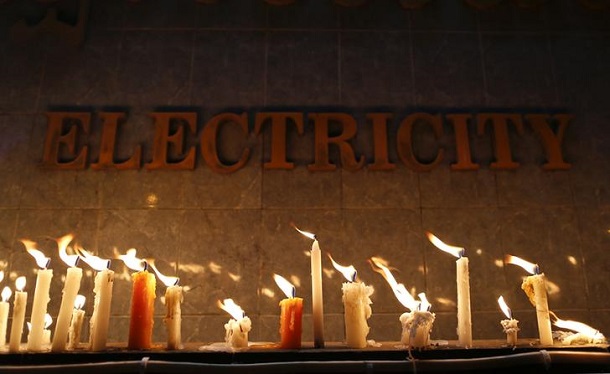In 2014, energy use caused damage worldwide amounting to US$5.3 trillion, according to analysts’ estimates at the International Monetary Fund. Of that, $5.124 trillion was due to fossil fuels with two-thirds attributed to coal. Climate change accounted for a quarter of the costs, with the rest due to sickness, premature death and degradation of the environment.
Analysts believe the damage adds up to 8-16 percent of GDP for developing countries in Asia, which for Myanmar equates to $4-8 billion in 2014.
If the estimates seem unrealistic, note worsening air pollution in cities like Yangon and Mandalay, which is beginning to exceed World Health Organization (WHO) standards. Matters are not necessarily better in the countryside where plastics and other rubbish are commonly disposed of in rivers or fires and unregulated trucks belch thick plumes of midnight-black exhaust.
Medical statisticians are already tallying the effects. The WHO’s Global Burden of Disease study estimates air pollution accounts for 2.5 per cent of years people in Myanmar spend living with disease or disability. Some recover while others die.
If action is not taken, the situation could take a heavy toll. In China, studies estimate air pollution, mostly due to fossil fuels, kills 1-3 million people per year while even in the UK the death toll runs to 30,000-60,000 annually.
Air pollution might be avoided with large hydropower dams. However, scientists and economists have amassed evidence that the energy benefits of large dams are not worth the costs to livelihoods, food security and environmental stability. Moreover, the burden is probably unequally shared across society. The parallels with smoking tobacco are not hard to see. Little wonder villagers are up in arms and policymakers are having to suspend projects, such as the 1,280 MW coal power plant at Inn Din in Mon State and the 6,000MW Myitsone dam in Kachin State, to preserve social harmony while leaving investors in the lurch.
Yet in a country without reliable and affordable electricity in the countryside, while demand is soaring in towns and cities, health and environmental concerns may be ignored. To do so means accepting the risks posed by increasing damage to fragile ecosystems upon which we depend for food, livelihoods and security.
Policymakers face the Gordian Knot of satisfying citizens’ demands for more energy services while ensuring good health, a healthy environment, and economic prosperity. Today, fortunately there are alternatives to the high pollution high impact pathway of the past. It is now possible to increase electricity supply, affordably, without costing the earth using solar and wind energy.
In 2015, $329 billion was invested in new clean renewable-energy generating capacity around the world totaling 121,000 MW. It was the first year in which renewable energy additions exceeded new coal, gas and oil power plants combined. Unsubsidized solar prices in Chile, India and the United States are around 6-8 cents per kilowatt-hour (kWh). Wind generated electricity in China, the United States and elsewhere costs 3-8 cents/kWh. Low costs depend on policies creating an environment attractive to investors.
Remarkably, wind and especially solar costs have been falling for years due to economies of scale and learning by doing. Statistical modelling of historical trends by researchers Doyne Farmer and François Lafond at Oxford University strongly suggests solar costs will fall 10 percent a year at least until 2030. If historical growth trends hold solar could supply 20 per cent of the world’s primary energy demand by 2027.
Solar and wind prices already compare favorably with new power projects in Myanmar. Electricity from the Inn Din coal power plant was expected to cost 7.75 cents/kWh and would be higher still if it factored in damage to health and livelihoods, environment and climate.
Granted, solar and wind prices, which exclude transmission and distribution costs, appear high compared to below cost residential tariffs in Myanmar. The issue however is not only the cost of a unit or kWh, rather, it is how much service or value each unit delivers to consumers. That depends on how efficiently each unit is used and whether consumers select high-efficiency appliances and change their behaviour to avoid waste.
In other words, paying more attention to energy efficiency, including elimination of blanket tariff subsidies, will help keep consumer bills steady while improving the quality of electricity and the environment.
Building a power system prizing efficiency around solar and wind means breaking with the legacies of earlier times when the environment and health impacts were not so well understood. If Myanmar chooses to break with the past, the door opens to the possibility of an energy leapfrog.
It is a path worth pursuing. It leads to accelerated access to sustainable electricity by exploiting the flexibility of solar coupled with advanced batteries and small hydro integrated into micro-grids, built simultaneously nationwide. Taking this pathway opens up the possibility of electric motorcycles, cars and buses with lower cost, pollution and noise. Life in towns and cities will be all the better. Lots of jobs will be created.
Surprisingly, enabling the leapfrog need not unduly burden the public purse. Local and foreign investors, possibly in partnership with communities, could finance energy options around solar, wind, microgrids and electric buses if policy and regulation are clear, simple and stable.
Investors need certainty and reasonable terms. That would leave the government free to focus limited funds on tough yet equally important matters such as welfare for the poorest and energy efficiency. If done right the result should spread prosperity across the country and foster greater harmony.
Source: The Irrawaddy | 18 February 2016














